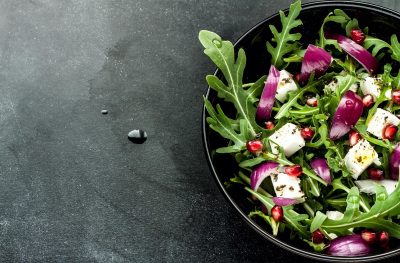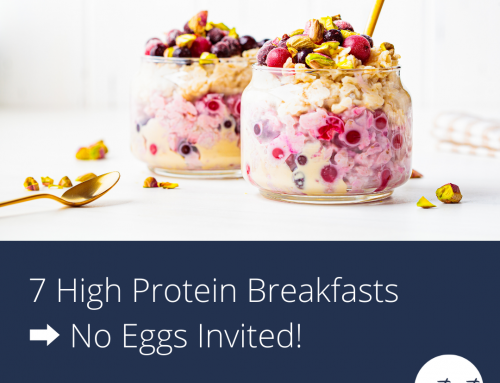Are you wondering what foods to eat for gut health? You’re not alone. Guts have been cranky in so many of my clients thanks to the stress (hello homeschooling, zoom meetings and navigating the ever changing rules) and change in routines over the last couple of months. Let’s talk about how to build a healthy, happy and discomfort free gut from the ground up.
Why focus on foods for gut health?
Building a strong, resilient and healthy gut means you’ll have more digestive stability in times of stress, lower risk of many chronic diseases, and healthier happier guts day to day. If you missed last week’s email on what a healthy gut looks like (or doesn’t) shoot me an email and I’ll forward you a copy.
Variety of fibre
I’ve talked about fibre and your gut before, but aside from getting enough fibre getting a variety of fibre to feed the broad spectrum of good gut bacteria is also key.
Check your weekly meal plan for at least 3- 4 different veggies (bonus if you can hit all three colour groups; orange/yellow, red/purple, dark green). Ideas for recipes here!
- If you’re eating grains, try swapping for the whole grain version. Think brown or wild rice instead of white, quinoa under a stir fry, or swapping a white bread for a sprouted grain version.
- Leave the skins on your root veggies like potatoes and sweet potatoes
Cruciferous Veggies every week
The crucifer family is a potent one from a health perspective. Aside from being a great source of fibre, they’re also packed with phytochemicals that our gut lining and bacteria love which is thought to be part of why they are protective from cancer risk in the research. If you have more serious GI issues, you may find these foods cause some discomfort. Add them in slowly in small amounts, or chat with a RD who can help you heal your gut first. If you find they make you really bloated, check out these tips to stop bloating healthfully.
- Add pre-shredded or homemade Coleslaw to a meal of pulled pork
- Grill up some broccoli (or toss it under your broiler/air fryer =) and thank me later! Toasty broccoli is a delight, and super easy to dress with a little vinaigrette after on the side of whatever BBQ meal you’re having.
- Toss a kale leaf in your smoothie
- Roast up some Brussel sprouts with Sunday night dinner, or run them over the mandoline and add some crunch to salads
- Substitute Cauliflower rice under your bowl or in your casserole
- Add steamed cauliflower in your mashed potatoes to go beside steak (a little butter and garlic make this extra special) or under meatballs
- Toss arugula in your sandwich, salad or even on top of pasta (it’s versatile and wiltable like spinach)
- Try broiling or grilling bok choy drizzled with a little sesame oil
Hydrate that gut barrier
Your gut barrier is easily compromised by low fluid intake (even a short time) and less fluid also leads to harder/slower/more uncomfortable poops and even constipation. Fluff this barrier up to protect your sensitive gut lining and provide a healthier buffer to soothe an inflamed gut.
- Aim for 30-35 mL per kg of body weight, or ~ 13-16 mL per pound of body weight.
- Tea, coffee (up to a couple cups), milks (plant or dairy), water, and most fluids aside from alcohol count here.
Prebiotics
If you want to get really fancy, focus on adding in some prebiotic foods. These are fibres that directly feed our good gut bacteria and help to rebalance our microbiome. Because we’re feeding the gut bacteria, a little extra gas is completely normal as long as it’s not painful/uncomfortable or super foul smelling. Your gut will also adapt over time, so start slow and give your bacteria a chance to grow gradually.
Great sources of prebiotic fibres are:
- Garlic
- Onions
- Artichokes
- Leeks
- Asparagus
- Beets
- Chickpeas
- Lentils
- Edamame or soybeans
- Cashews
- Pistachios
Movement
Exercise positively influences the gut microbiome independent from diet, it’s another tool in the toolbox to build a healthy gut! If you have issues with constipation, more regular movement throughout the day and overall during the week will improve motility on top of the changes to our gut bacteria. After completing the Workout to Conquer Cancer in May, my new goal is to get active most days for at least 30 minutes (aiming for 5-6, because progress not perfection is my motto). More on days I can swing it, but at least a walk or yoga video on days I can’t.
You can try:
- Walking daily after dinner
- Finding a fitness video subscription site like Alo Moves, Glo, or others to dip your toe in at home.
- Setting a timer to get up from your desk and refill your water or stretch every 60-90 minutes.
- Watching your favourite show or listening to your favourite podcast daily on the bike or treadmill
- Making an effort to get outside weekly on your day off for a nature walk or hike in beautiful BC
- Making a weekly date with a friend for a physically distanced walk and chat
- Experimenting to find activity that gets your heart rate up, but that you enjoy! It will be the most sustainable.
Probiotics
Evidence for probiotic use in an already healthy gut is mixed, and may actually reduce the diversity of gut bacteria over time. The right probiotic used for the right issue in an unhealthy gut is incredibly therapeutic. I encourage you to focus on food and lifestyle first, and if you’re stuck get help from someone to choose a probiotic that will be safe, effective and targeted to your challenge. Most probiotic supplements haven’t been tested for efficacy, and trendy new “blends” may have strains that interact differently, cancel each other out, or at worst make your problem bigger.
Adding fermented foods more often such as non-pasteurized sauerkraut, kombucha, yogurt, and kefir is a safer and more sustainable addition. The small daily dose of good bacteria seems to stimulate a positive immune response in the gut. This is a great way to boost gut health with real food!
When it comes to gut health, slow and steady wins the race. Add new foods gradually with lots of extra fluid, and allow your system to adapt. Working it into your existing routines (like having a little reminder on your meal plan, or finding a go to recipe full of cruciferous veggies) takes the work out of meeting your microbiome’s need for variety. Every step counts, so there’s no need to stress out trying to do all things at once.
Ready for the next step in building a healthy gut? Find out how to use the gut brain connection to your advantage for reflux, irritable bowel syndrome, and digestive distress.
Need some help getting your meals for the week balanced and prepared? If you’d like to receive our free Meal Planning Getting Started Guide AND get in on our weekly emails about all things nutrition so you can get clarity and confidence on what you’re eating, join us here!







